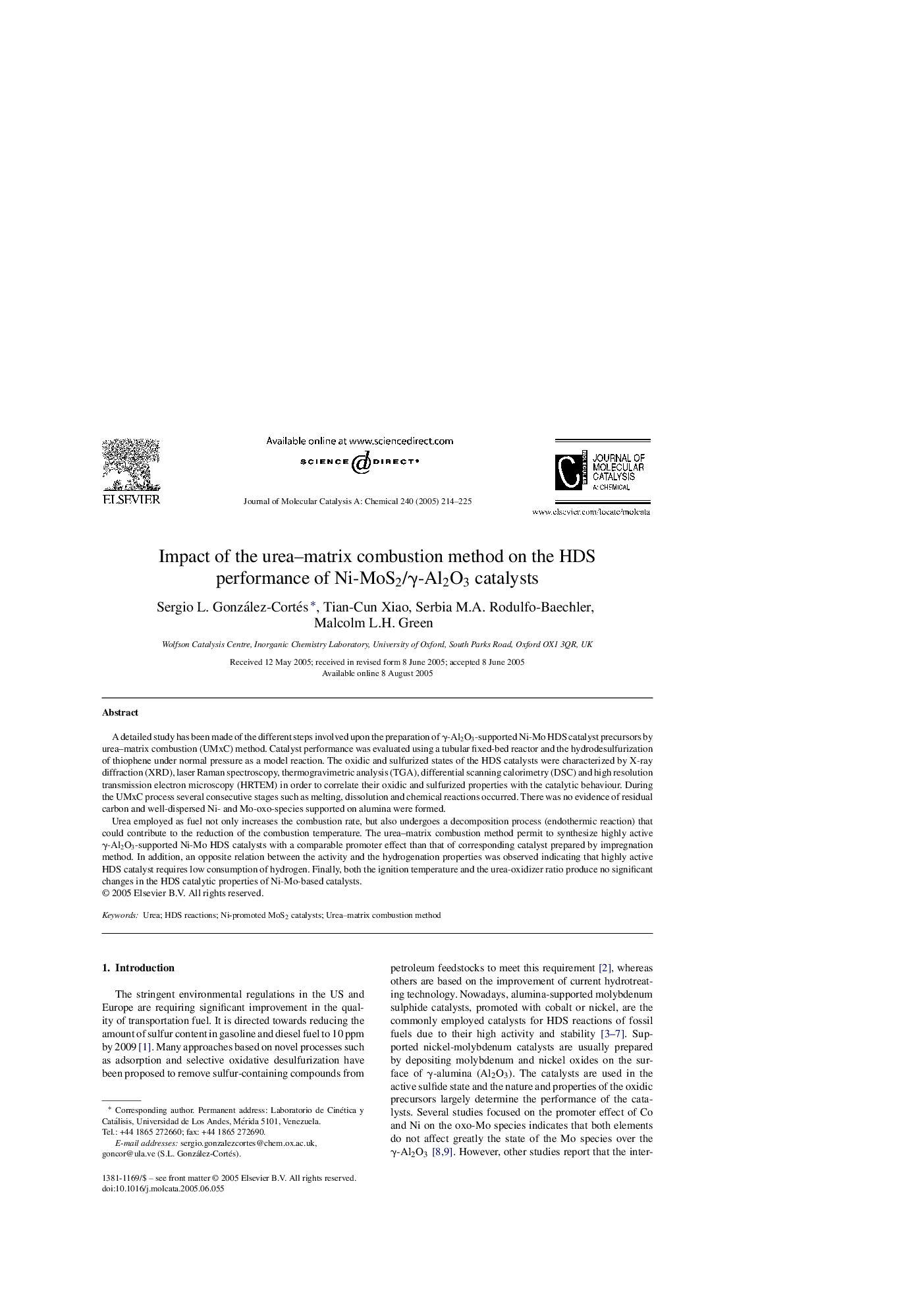| Article ID | Journal | Published Year | Pages | File Type |
|---|---|---|---|---|
| 9614465 | Journal of Molecular Catalysis A: Chemical | 2005 | 12 Pages |
Abstract
A detailed study has been made of the different steps involved upon the preparation of γ-Al2O3-supported Ni-Mo HDS catalyst precursors by urea-matrix combustion (UMxC) method. Catalyst performance was evaluated using a tubular fixed-bed reactor and the hydrodesulfurization of thiophene under normal pressure as a model reaction. The oxidic and sulfurized states of the HDS catalysts were characterized by X-ray diffraction (XRD), laser Raman spectroscopy, thermogravimetric analysis (TGA), differential scanning calorimetry (DSC) and high resolution transmission electron microscopy (HRTEM) in order to correlate their oxidic and sulfurized properties with the catalytic behaviour. During the UMxC process several consecutive stages such as melting, dissolution and chemical reactions occurred. There was no evidence of residual carbon and well-dispersed Ni- and Mo-oxo-species supported on alumina were formed.Urea employed as fuel not only increases the combustion rate, but also undergoes a decomposition process (endothermic reaction) that could contribute to the reduction of the combustion temperature. The urea-matrix combustion method permit to synthesize highly active γ-Al2O3-supported Ni-Mo HDS catalysts with a comparable promoter effect than that of corresponding catalyst prepared by impregnation method. In addition, an opposite relation between the activity and the hydrogenation properties was observed indicating that highly active HDS catalyst requires low consumption of hydrogen. Finally, both the ignition temperature and the urea-oxidizer ratio produce no significant changes in the HDS catalytic properties of Ni-Mo-based catalysts.
Keywords
Related Topics
Physical Sciences and Engineering
Chemical Engineering
Catalysis
Authors
Sergio L. González-Cortés, Tian-Cun Xiao, Serbia M.A. Rodulfo-Baechler, Malcolm L.H. Green,
